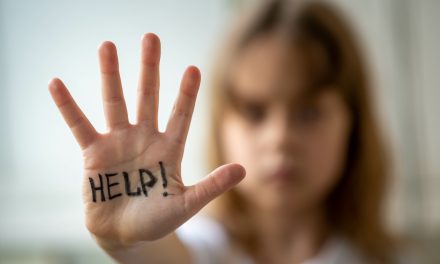I think we all Remember Jared Fogle from Subway. He burst into fame in 2000 with dramatic weight loss that he attributed to his diet of only eating Subway sandwiches. Fogle was featured on shows such as Oprah and other talk shows for his dramatic and successful weight loss and quickly became a consistent household name.
While hiding behind a veil of inspiration and fame, he hid who he truly was…a monster. Jared spent much time with children as he became this health and weight loss icon. He would do commercials with children and talk to young students about healthy lifestyles. All the while, he was actively engaging in pedophilia.

From his nearly ubiquitous presence in Subway commercials in the early 2000s to his shocking criminal charges in 2015, the story of Jared Fogle serves as a cautionary tale and a poignant reminder of the depths of human failings, all set against the backdrop of the fast-food industry and celebrity endorsements.
Rise to Fame
Jared Fogle first entered the public eye in a uniquely American way. Overweight and unhealthy while attending Indiana University, Fogle largely lost a significant amount of weight (245 pounds) by incorporating low-fat Subway sandwiches into his diet. His story was reported in the university newspaper and subsequently picked up by national news outlets. Subway, sensing an opportunity, signed Fogle as a spokesperson. His narrative was simple and compelling: ordinary guy, extraordinary change.
Fogle’s story resonated with Americans. His commercials, featuring his famous “fat pants” and the promise of weight loss through fast food, were an instant hit. His journey tapped into our collective desires for transformation and our struggle with weight and health. Fogle quickly became the human face of Subway, propelling the chain to greater heights. His endorsement seemed genuine, a real-life testament to the power of Subway’s healthier menu options.
The Unmasking Begins
However, a disturbing reality lurked beneath this façade of health, transformation, and wholesomeness. On July 7, 2015, federal agents raided Fogle’s home in connection with a child pornography investigation. This wasn’t just a shock to the public—it was a body blow to the Subway brand, which had staked its reputation on Fogle’s wholesome image.
The Legal Fallout
In August 2015, Fogle pleaded guilty to possessing child pornography and crossing state lines to pay for sex with minors. In November of the same year, Fogle was sentenced to more than 15 years in prison. The transformation that captured America’s hearts had veered into a horrifying nightmare. It was a fall from grace as swift as it was stunning.
The turn of events in August 2015 shook the nation. Jared Fogle, the face of Subway and the embodiment of health transformation, faced federal charges that bore no resemblance to the figure who had inspired millions. Fogle stood before a court and pleaded guilty to two deeply repugnant and shocking charges – possessing child pornography and crossing state lines to pay for sex with minors.

Moreover, the investigation found that Fogle had amassed a collection of child pornography, some involving children as young as six. This fact emphasized the predatory and disturbing nature of his actions. His wrongdoings had reached deep into the most sacred societal norms – the safety and innocence of our children.
The magnitude of his crimes had been hidden behind his carefully cultivated public image. As a trusted figure in the public eye, Fogle had access to opportunities that he twisted to suit his sinister desires. This use of a public trust for personal, illicit purposes made his fall from grace all the more poignant and shocking.
In November 2015, the hammer of justice fell. Fogle was sentenced to 15.6 years, a term longer than the prosecutors had initially sought. Rightfully prioritizing the severity of his offenses over his fame, the judge pointedly noted that Fogle had “exploited children using wealth and position.” The weight of his sentence reflected society’s condemnation of his actions.
This transformation from an inspiring figure to a convicted felon was a stunning fall from grace. The man who had once stood before us as an ordinary person achieving extraordinary health feats was now a confessed predator. His deeds unveiled a horrifying reality far removed from the wholesome image so carefully constructed in Subway’s advertisements.
The journey of Jared Fogle, from an iconic weight loss success story to a convicted criminal, is a shocking lesson in contrast. It serves as a reminder that fame and reputation can hide many sins and that individuals in the public eye can be as flawed, if not more so, than those who admire them.
Fogle’s fall from grace is a grim tale of betrayal that broke hearts across America. The man who once paraded his “fat pants” to inspire others had now become a symbol of one of society’s most horrendous crimes. His journey had veered from a path of inspiration and hoped to a dark alley of deceit, disgrace, and violation, leaving a horrified nation grappling with the shattered illusion of an American success story.
Child Exploitation and Sex Trafficking
More importantly, Fogle’s charges highlight the ongoing battle against child exploitation and sex trafficking. While Fogle’s case is high-profile, it is sadly not unique. Across the world, millions of children are exploited and abused, often in the shadows. The case prompts us to ask not only difficult questions about celebrity culture but also about the safety of our children.
Critical Aspects of Child Exploitation and Sex Trafficking
Here is a list of some of the critical aspects of child exploitation and sex trafficking that everyone should be made aware of:
- Pervasiveness: Child exploitation and sex trafficking are tragically widespread in the U.S. Contrary to popular belief; it’s not just a problem in other countries; it’s happening right here at home.
- Victims: Traffickers often prey on the most vulnerable, such as runaway and homeless youth or those with a history of abuse and neglect. It’s important to remember these are children who need protection.
- Online Exploitation: The internet has made it easier for predators to exploit children. Online platforms are increasingly used to recruit, groom, and exploit victims.
- Complex Crime Networks: Child exploitation and sex trafficking often involve intricate networks of criminals skilled at manipulation and coercion, making these crimes incredibly difficult to detect and prosecute.
- Impact on Victims: The impact on victims is devastating. They often experience severe psychological trauma, physical harm, and long-term health issues. The cycle of exploitation can be incredibly difficult to break.
- Societal Stigma: Victims of trafficking often face societal stigma and lack of understanding, further deepening their trauma and creating barriers to seeking help.
- Need for Education: There is a critical need for public education and awareness about these crimes. Many people are unaware of the signs of trafficking and don’t understand the breadth and depth of the issue.
- Legal System Challenges: Our legal system often struggles to address child exploitation and sex trafficking adequately. Law enforcement and court systems need more resources and specialized training to combat these crimes effectively.
- Prevention Efforts: More efforts must be invested in prevention, including supporting at-risk youth and implementing education programs to help children and adults recognize the signs of exploitation.
- Support for Survivors: Survivors of exploitation need comprehensive support, including trauma-informed care, safe housing, and educational and job training opportunities to help them rebuild their lives.
This list highlights some key aspects of child exploitation and sex trafficking in America. It’s a sobering reminder of a horrifying reality that is often overlooked. We must confront these issues boldly and decisively if we hope to protect the most vulnerable members of our society.
Facts About Child Exploitation and Sex Trafficking
Child exploitation and sex trafficking are heinous crimes that shockingly persist in today’s society. Though these issues are global, it is critical to recognize their alarming prevalence in the United States. This list provides a series of stark facts and statistics that underline the scale and severity of child exploitation and sex trafficking in America:
- The scale of the Problem: The National Center for Missing and Exploited Children (NCMEC) estimates that 1 in 7 runaways reported in 2019 were likely victims of child sex trafficking.
- Age of Victims: The average age a teen enters the sex trade in the U.S. is 12 to 14 years old, according to the U.S. Department of Justice.
- Proliferation Online: The NCMEC reported a staggering 93% increase in reported child sexual exploitation incidents in 2020 compared to the previous year, with many cases involving the internet.
- At-Risk Populations: Children in foster care are especially at risk. A study in 2013 found that 60% of child sex trafficking victims recovered during an FBI raid across the U.S. had once been in the foster care system.
- Frequency of Arrests: According to the Bureau of Justice Statistics, 3,600 suspects were arrested for federal human trafficking offenses from 2000 to 2015. Approximately two-thirds of these arrests involved the sex trafficking of a child.
- Limited Convictions: Of these arrests, only 30% led to convictions. This underlines the immense challenge of prosecuting these cases.
- Survivor Needs: According to a study by Covenant House, nearly 1 in 4 victims of trafficking needed medical care, and more than half had thought about suicide at some point.
- Trafficking Locations: Although trafficking occurs in every state, the highest reported cases are in California, Texas, and Florida, according to the National Human Trafficking Hotline.
These chilling statistics highlight the grim reality of child exploitation and sex trafficking in the U.S. The sheer magnitude of the issue underscores the urgent need for collective action – from public education and prevention efforts to providing support for survivors and legal reforms to strengthen the prosecution of these heinous crimes. The fight against child exploitation and sex trafficking demands our attention, compassion, and unwavering commitment to protecting the most vulnerable.
Praising Public Figures
Even as we examine Fogle’s case, it’s crucial to remember that this story is not merely about a fallen icon but about real victims who suffered because of his actions. Their experiences remind us of the crucial need for vigilance and legal action in protecting the most vulnerable among us.
The fall of Jared Fogle is a complex story deeply intertwined with American pop culture, the fast food industry, celebrity endorsements, and the fight against child exploitation. It’s a stark reminder that a possible darker truth lurks behind the curtain of celebrity and success. It’s a story that forces us to confront our often-misplaced faith in public figures and how much we let them influence our choices and opinions.
Reflecting upon Fogle’s fall from grace, it’s worth asking ourselves some tough questions. Why were we so willing to believe in the transformation of an individual based purely on a marketing campaign? What made us, the public, invest so much trust in a spokesperson whose life we knew only superficially?
There’s a critical lesson about the risks of idolizing public figures without scrutiny. Fogle’s downfall underscores the responsibility of companies to vet their ambassadors carefully and consider the potential backlash if their public image doesn’t align with their private actions. His case offers a grim reminder of the risks of placing human beings on pedestals based solely on a constructed narrative.
What We Can Do to Keep Children Safe from Predators like Jared and Child Exploitation

- Educate and Empower: We must equip children with the knowledge and confidence to identify potentially harmful situations. Comprehensive age-appropriate education about their rights, personal boundaries, and safe internet practices can help children protect themselves from exploitation.
- Open Communication: Establishing a trusting relationship with children can encourage them to discuss their experiences and concerns openly. Maintaining non-judgmental, empathetic communication is vital so they feel safe sharing any discomfort or fear they might encounter.
- Monitor Internet Use: Predators often lurk behind screens in the digital age. Regularly monitoring a child’s internet usage, understanding their online activities, and teaching them about the dangers of sharing personal information can significantly reduce the risk of online grooming.
- Identify Warning Signs: Familiarize ourselves with the signs of child exploitation, such as sudden behavioral changes, unexplained possessions or money, secretive behavior, especially concerning online activities, and new, older friends. Timely recognition can lead to early intervention and prevention.
- Report Suspicions: Acting if we suspect a child is being exploited is crucial. Report suspicions to local law enforcement or contact the National Human Trafficking Hotline. The information shared could save a child from exploitation.
What Law Makers Need to Do
- Strengthen Legislation: Laws must reflect the severity of child exploitation and sex trafficking. Legislators should ensure the enforcement of stringent penalties that act as deterrents. Legal provisions should also focus on the protection and rehabilitation of victims.
- Fund Support Services: Significant funding is needed to provide comprehensive services for victims, such as safe housing, medical aid, psychological counseling, and educational support. These services help survivors rebuild their lives after the traumatic experiences of exploitation.
- Promote Education: Mandatory education about sex trafficking and exploitation should be included in school curriculums. Children need to understand the potential dangers they may face in the real world and online.
- Resource Allocation: Law enforcement and judicial systems should receive the necessary training and resources to address child exploitation and sex trafficking effectively. This includes training in victim identification, trauma-informed interrogation, and the provision of victim support.
- Policy Reform: Policies must be reformed to ensure victims are not criminalized. Many trafficked and exploited children are often wrongly treated as offenders. The focus should be on treating these children as victims and providing them with the necessary support and rehabilitation services.
With these comprehensive actions, we can collectively contribute to protecting our children from the horrors of exploitation and sex trafficking. This multi-faceted approach requires cooperation and concerted effort from individuals, communities, and lawmakers alike.
Aftermath and its Impact on Subway

However, it’s essential to remember that the story doesn’t end with Fogle’s conviction or Subway’s tarnished reputation. At the heart of this narrative are countless victims whose stories are often overlooked in high-profile cases like this one.
These victims are a painful reminder of the ongoing battle against child exploitation, a struggle that persists in the shadows of our society. Fogle’s case, while shocking, is just the tip of the iceberg. It underscores the urgency for stricter laws, more significant penalties, and a greater societal emphasis on protecting the innocence of children.
The story of Jared Fogle is a tragic tale of a man who fell into horrific criminal behavior despite his public image of personal triumph. It’s a narrative that offers lessons about celebrity culture, the perils of uncritical trust, and the realities of child exploitation.
It compels us to look beyond the surface, question the narratives presented, and challenge the systems and structures that allow such terrible actions to occur. While Fogle’s story has ended in disgrace and incarceration, it opens the door to more significant conversations and, hopefully, to more substantial actions against child exploitation.
And let’s be honest, does anyone really like Subway sandwiches anymore? Take one look at TikTok; it will tell you all the gross details you need to know about why you should never eat or support Subway ever again.
Resources
If you suspect a child is being exploited or trafficked, it’s essential to report it to local law enforcement or the National Human Trafficking Hotline at 1-888-373-7888.
































South Florida Media Comments